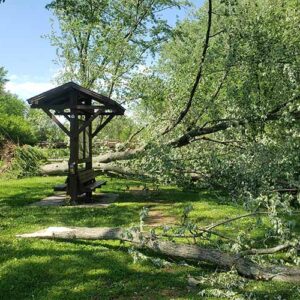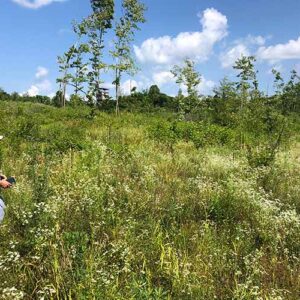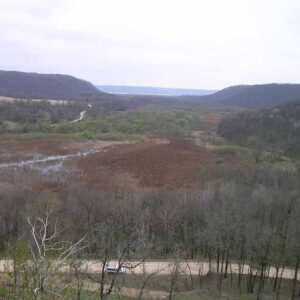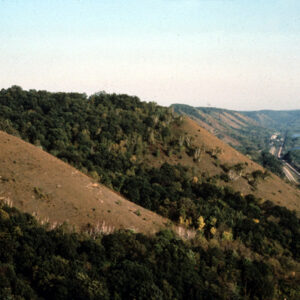The Plants and Natural Communities Working Group’s mission is to focus on plants and their natural communities, ecological functions, and processes. The group assesses climate change vulnerabilities and promotes science-based, adaptation-focused management of plants and natural communities.
Summary of Issues and Impacts
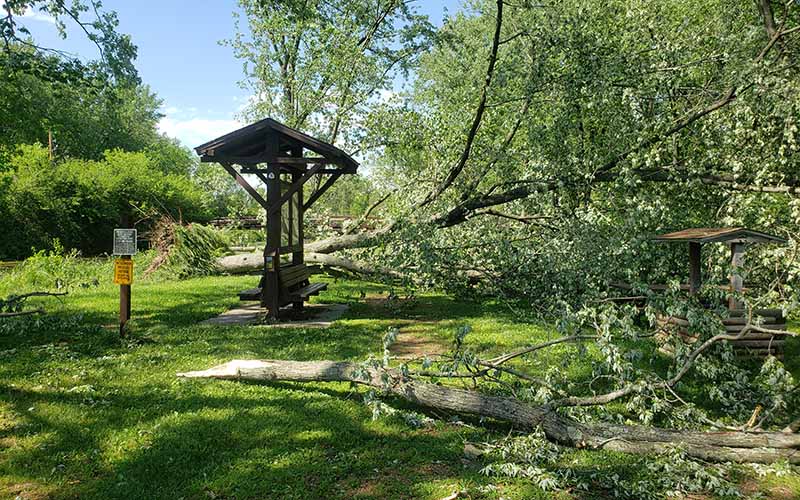
Wisconsin’s natural communities, including prairies, forests, savannas and wetlands, will be affected by a changing climate during this century. Not all natural communities will be affected equally, however. Teams of managers and researchers have assessed the climate vulnerability of Wisconsin’s natural communities and summarized their findings in the Climate Change Vulnerability Assessments (CCVAs)
During spring of 2020, the various working groups for the Wisconsin Initiative on Climate Change Impacts (WICCI) were asked to describe the most significant ways that climate change affects their unique concerns in Wisconsin for the Governor’s Task Force on Climate Change, and propose solutions for addressing them. The Plants and Natural Communities Working Group identified 10 specific climate change issues, along with the impacts that those issues have on plants and natural communities:
1
More Intense and Frequent Heavy Rainfall
Extreme storms cause erosion that can damage soils and vegetation, as well as infrastructure such as roads, bridges, culverts, and trails. Extreme rainfall events also carry significant amounts of nutrients and sediment to wetlands and waterbodies. These can diminish culturally important plants such as wild rice and encourage growth and dispersal of harmful or invasive plants such as blue-green algae and Eurasian water-milfoil. To learn more, see this issue brief: Reducing the Impacts of Extreme Precipitation to Benefit Both Natural and Human Communities (pdf).
2
Wetter Overall Climate, Especially During Winter and Spring
Prescribed burning opportunities may change due to a changing climate. Diminished prescribed fire in fire dependent ecosystems can reduce numbers and productivity of important native species, including some that hold cultural importance to tribes, like blueberries, as well as diminish ecosystem integrity, making them less resilient to climate change.
3
More Summer Droughts and Longer Periods Between Rain Events
Increased evapotranspiration can lead to drying of soils and lower groundwater, causing drying of wetlands and changes in their composition, quality, structure and function. Upland forest tree species composition may also shift in response to warmer conditions.
4
Warming Temperatures Combined with Increased Atmospheric Carbon Dioxide
Non-native invasive species benefit from warming temperatures and carbon dioxide enrichment.
5
Warming Temperatures, Including More Extreme Summer Heat
Native plants that are at the southern edge of their range or that have restricted ranges or habitats may disappear from Wisconsin. This is especially true for boreal species and natural communities.
6
Milder Winters with Less Snow
Tree regeneration is increasingly inhibited by deer as higher deer numbers survive milder winters and woody stems are more accessible with shallower snow. Tree roots are also more vulnerable to frost damage when they lack insulating snow cover.
7
Winter Precipitation Increasingly Falling as Rain and Freezing Rain
Rain falling on frozen ground can transport manure spread on fields and road salt to waterways and wetlands, causing harm to wetland plants and encouraging growth of invasives.
8
Great Lakes Changes, Including Increased Extreme Storms, Rapid/Extreme Water Level Changes, and Increased Wave Action
These can cause shoreline erosion, slumping, increasing freeze-thaw cycles, and drought. Near-shore coastal wetlands are experiencing increasing deposition of sediment. Also, increased armoring of shorelines in response to climate change can result in loss of important wetlands and other shoreline habitats.
9
Multiple Climate Stressors, Often Combined with Other Existing Stressors
Climate change amplifies existing non-climate stressors (habitat loss and fragmentation, invasive species, lack of fire, excessive deer browse, and nutrient runoff) to the point where once-diverse habitats are simplified, associated wildlife species diminish or disappear, important ecosystem services are lessened (like water filtration and pollinator sources), and sustainable harvests of desirable species are limited. To learn more, see this issue brief: Habitat Restoration Can Reduce Adverse Impacts of Multiple Climate Stressors (pdf).
10
Increasing Atmospheric Carbon Dioxide
Natural communities such as forests, grasslands and wetlands, particularly peatlands, can mitigate climate change by sequestering carbon.
Recommended Solutions/Strategies
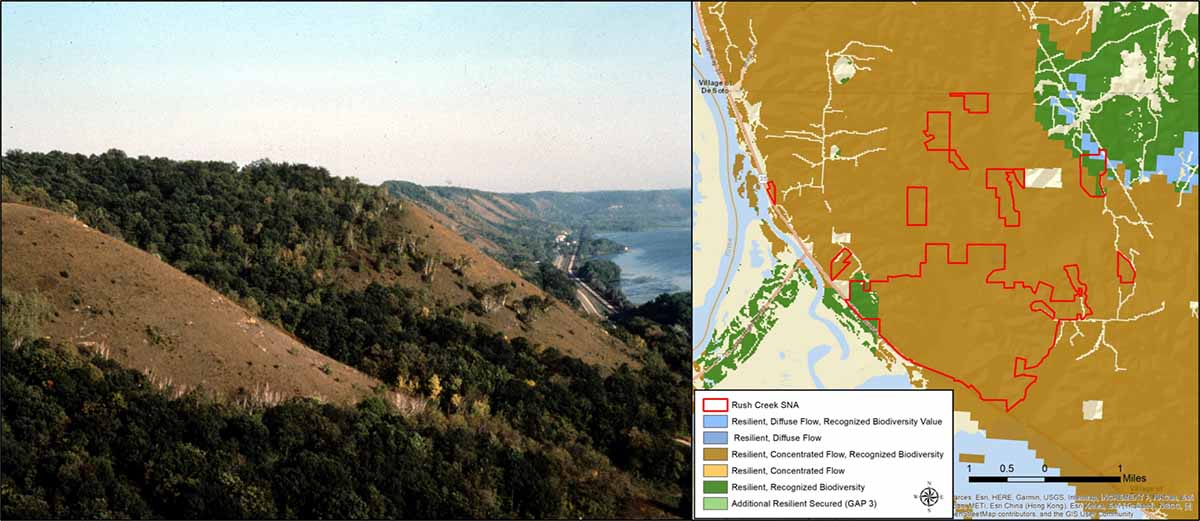
The WICCI Plants and Natural Communities Working Group identified possible strategies to address the 10 climate change issues and impacts listed above in this document: Issue-Impact-Strategy Table of Recommendations for the Governor’s Climate Change Task Force (pdf). These ideas were prioritized and consolidated along with those of other working groups in WICCI’s final report to the Governor’s Task Force (pdf).
Readers will find greater detail in the working group table than could be afforded in the more concise final task force report, and are thus encouraged to read both documents. Please feel free to borrow these ideas and leverage them to promote climate change adaptation and mitigation in Wisconsin and beyond.
Environmental and Climate Justice Issues
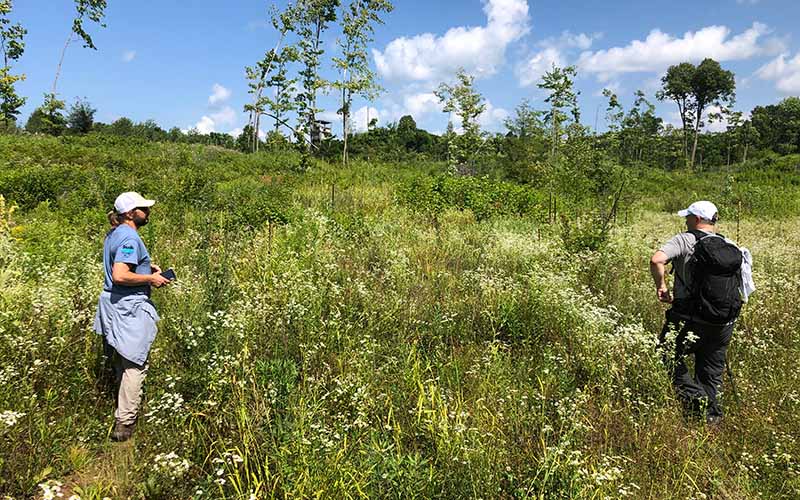
The Plants and Natural Communities Working Group identified multiple areas where their work intersects with environmental and climate justice. Specifically, they call for decision-makers to consider how maintaining diverse, intact, and resilient natural communities like wetlands, grasslands, and forests can preserve opportunities for gathering, hunting and fishing for both cultural traditions and subsistence, ensure sustainable livelihoods for small-scale farmers, and minimize flooding in floodplains and elsewhere.
At the same time, resisting, accommodating, and mitigating negative climate change impacts on plant communities also reduces the adverse human health effects of climate stressors by promoting healthy soils, clean air, and clean water — the building blocks of a healthy environment — to which populations with different spatial and socioeconomic backgrounds have disproportionately limited access.
Decision-makers should ensure that these historically sidelined populations are equitably engaged and actively realizing the full benefits of healthy plant and natural communities.
Resources and Services
This is an accordion element with a series of buttons that open and close related content panels.
Climate Symposia and Workshops
We offer large workshops and conference symposia, as well as small site-based workshops where we work with property managers and stakeholders to help managers translate big concepts relating to climate change impacts into tangible, real-world actions. Contact us with your workshop needs, big or small!
Climate Adaptation Demonstration Sites
Adaptation demonstration projects are real-world examples of how managers have integrated climate considerations into land management planning and activities. These projects strengthen partnerships and help to test new ideas and actions for responding to changing conditions. They come in all shapes and sizes, showing a variety of adaptation actions that also achieve natural resource management goals.
Our working group has added two demonstration sites to the larger compendium created by the Northern Institute of Applied Climate Science (NIACS); see their website to learn more or contact us for more information.
2019 Climate Adaptation Strategies and Approaches for Conservation and Management of Non-Forested Wetlands
This document includes a set of adaptation strategies and approaches for non-forested wetlands that can be used by managers working on projects that support hydrologic function, vegetation management, ecological restoration, and infrastructure improvements. Learn more at the NIACS wetland adaptation pages.
Designing Plant Mixes for Restoration Plantings to Maximize Climate Resilience
For many years, restoration practitioners have expressed a need for lists of “resilient” or “climate-ready species” to be used in restoration plantings. This report explains that while planting such species can certainly boost the odds for germination and survival in a changing climate, there are a number of other core principles that, when applied to the plant mix design process, may also bolster resiliency of plantings.
Impact of Climate Change on Plants and Natural Communities
Our Team
Members
- Amy Staffen (chair), Conservation Biologist, Natural Heritage Conservation, Wisconsin Department of Natural Resources, amy.staffen@wisconsin.gov
- Owen Boyle, Chief, Species Management Section, Bureau of Natural Heritage Conservation, Wisconsin Department of Natural Resources
- Ann Calhoun, Baraboo Hills Project Coordinator, Wisconsin Chapter of The Nature Conservancy
- Peggy Burkman, Biologist, National Park Service
- Kevin Doyle, Botanist, Natural Heritage Conservation, Wisconsin Department of Natural Resources
- Jason Granberg, Invasive Plant Specialist, Natural Heritage Conservation, Wisconsin Department of Natural Resources
- Nathan Holoubek, Habitat Management Specialist, Wildlife Management, Wisconsin Department of Natural Resources
- Sarah Johnson, Associate Professor of Natural Resources, Northland College
- Kelly Kearns, Wisconsin Department of Natural Resources (retired)
- Chad Kirschbaum, U.S. Forest Service, Chequamegon-Nicolet National Forest
- Ryan O’Connor, Ecologist/Inventory Coordinator, Natural Heritage Conservation, Wisconsin Department of Natural Resources
- Hannah Panci, Climate Change Scientist, Great Lakes Indian Fish and Wildlife Commission
- Danielle Shannon, USDA Northern Forests Climate Hub Coordinator, Northern Institute of Applied Climate Science
- Quita Sheehan, Conservation Specialist, Vilas County Land and Water Conservation Department
- Sara Smith, Midwest Tribal Resilience Liaison, College of Menominee Nation Sustainable Development Institute
- Josh Sulman, Environmental Scientist, Stantec
- Keir Wefferling, University of Wisconsin-Green Bay
- Matt Zine, Conservation Biologist, Natural Heritage Conservation, Wisconsin Department of Natural Resources

